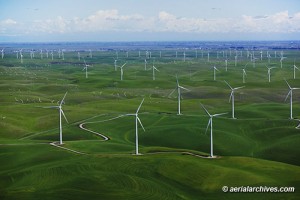How to Overcome the Variability of Renewable Energy
The most popular forms of Renewable Energy (R.E.) are solar and wind, so what do you do when the sun does not shine and the wind does not blow. These type of factors make up the variability of a renewable energy technology. A R.E. system’s variability depends on the consistency of the fuel source (sun and wind in the case of solar and wind energy) and the changes in demand of the grid through the day. There are two solutions for these issues: 1) choose one of the up and coming technologies that have continuous generation (geothermal, biomass, hydroelectric) or 2) install enough solar and/or wind technology to create more stability across the system. Once the level of energy created is stable, the fluctuations from the grid will be managed more easily.
A single wind farm can be very volatile but when you add additional farms across a state with additional transmission lines, it creates less of a need to “curtail”, the act of dumping excess power. Take Texas for example. Four years ago, facing severe transmission constraints, the state was dumping 17% of all the wind power it produced. In 2012, after adding more wind farms and almost 2,600 miles of transmission lines, curtailments were below 4%, and wind power provided 10% of the electricity in the nation’s biggest power market (sourced from www.wsj.com).
Alternate technologies such as biomass, geothermal and hydroelectric offer a constant power generation since they have a predictable fuel source. For example, biomass products are abundant and renewable. Since they come from living sources, and life is cyclical, these products potentially never run out, so long as there is something living on earth and there is someone there to turn that living things components and waste products into energy (http://www.conserve-energy-future.com). Having a steady fuel source means a biomass gasification unit or anaerobic digester, two examples of several biomass technologies, will provide a steady source of energy.






